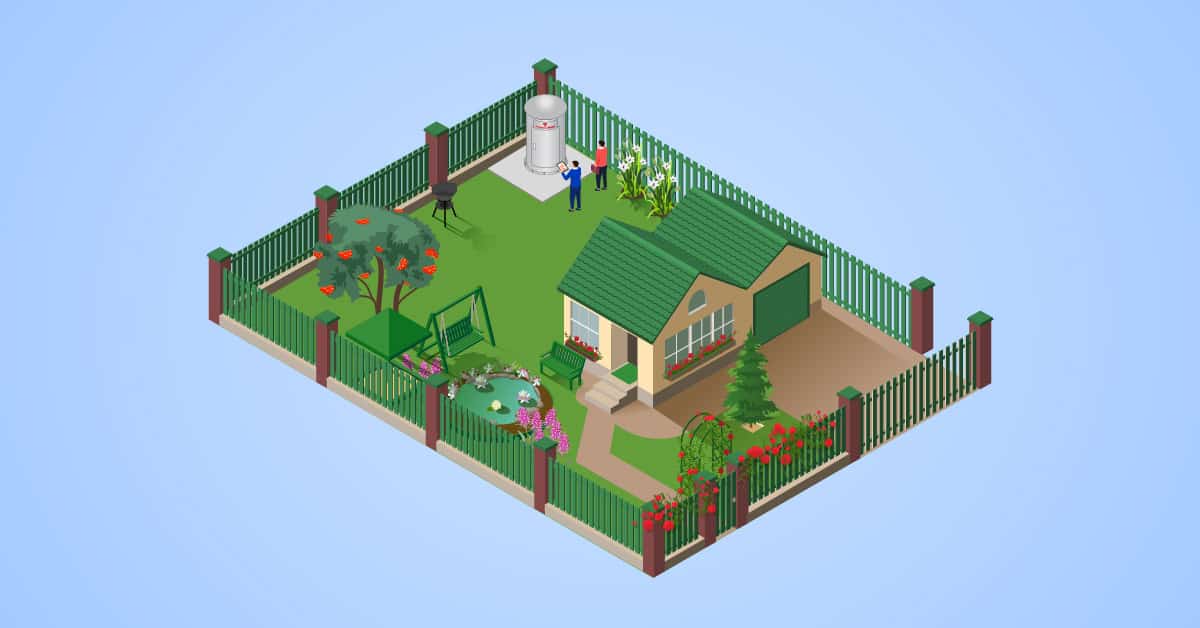CATEGORIES:
What Size Tornado Shelter and Other Details To Know Before Buying a Residential Tornado Shelter
October 25, 2022

Before you buy a tornado shelter, there’s one fundamental question that you must know the answer to, “How many people do I need to protect?” Which may lead you to ask, “How do I determine what size tornado shelter to buy?”
How many people will be in your tornado shelter?
When the shelter is for your home, you first consider how many people are in your household. If you are a family of four, that’s a great place to start. You might also want to consider the chance that grandparents or other visitors will be in the home. The goal is to determine how many people could be in your home at any given time. Just remember that tornadoes don’t care whether or not you have visitors in your home or what time of day they strike. That’s why being prepared is essential.
You will also want to consider what other supplies and materials will be stored in your home’s tornado shelter (without cluttering it) and the needs of those in your household.
How to determine what size tornado shelter to buy
Once you know the number of people you are protecting, start looking at the available space.
In your home, you are free to purchase the size that you think best serves your situation. And certainly, having a shelter is better than not having one at all. However, if you want to use established guidelines, or if you’re purchasing the tornado shelter with grant money, the Federal Emergency Management Agency, or FEMA, has some guidelines for tornado shelters. And, considering there has not been a single reported failure of tornado shelter built to FEMA specs, there’s some comfort in those guidelines.
Much of determining the size depends on the type of storm you are considering. For example, tornadoes don’t last long, so you wouldn’t be staying in the shelter for an extended period. With that consideration, FEMA recommends three square feet of floor area per person for residential tornado shelters.
While this article is primarily about tornados, some areas are prone to both tornadoes and hurricanes, so it’s fair to mention that the FEMA guideline for hurricanes is seven square feet per person. The guideline for hurricanes assumes that people will be sheltering for 24 hours or more.
Considering Your Family’s Personal Needs For Residential Tornado Shelters
Everyone has different needs, and it’s important to remember that when thinking about residential tornado shelters. In addition, if any member of your family has limited mobility or a disability, that’s also a valid consideration.
Making space for wheelchairs is also something to think about. In that case, FEMA recommends 10 square feet per person in a wheelchair, regardless of if you are protecting yourself from tornadoes or hurricanes.
All of the residential tornado shelters offered by Survive-A-Storm state their occupancy based on FEMA guidelines. Our residential tornado shelters offer three square feet per occupant.
Another consideration is accessibility to the shelter itself. If stairs are an issue for any member of your household, or they could be soon, you will want to consider if the shelter you are buying is easy to access. Does it have stairs? If it's inside your home, is it in an area of your home that has easy access?
Where To Take Shelter
Having a storm shelter can be the difference between life and death.
In many areas of the US, having a basement is common. In some of those areas, tornados are also common, so many people naturally take shelter from tornadoes in the basement of their homes, with no additional precautions. To them, “tornado shelter” is synonymous with basements and being underground. But the truth is, being underground is NOT the only way to go when it comes to tornados. (And some basements may not offer the protection their occupants think they do.)
In coastal areas or other places that are prone to flooding, underground shelters are infeasible. And, even if you don’t have the danger of flooding to contend with, putting an underground shelter into a home with no basement may be an impractical solution for you.
The good news is that today’s above-ground tornado shelters are just as safe as those below ground. In fact, entry time for above-ground tornado shelters is quicker, so it can argued that they are SAFER.
There are options for above-ground shelters that can be placed inside the home in an internal area. Or, for those who don’t have the space to spare, they can be placed outside on a slab and then anchored down. They can also be used in homes that have basements, but still lack an actual room designed to withstand a tornado, like those with only walk-out basements, where one side of the basement is open to the outside, with full doors and windows.
As mentioned above, the needs of your occupants are a critical factor to consider. An above-ground, or ground-level tornado shelter offers the most accessibility since there are no stairs to impede either those in wheelchairs or with low mobility.
However, for those with none of those challenges, and a limited amount of space, a below-ground, or underground shelter might be the preference.
Even if you don’t have a basement, you can still have an underground tornado shelter. There are special shelters designed to be placed under existing concrete slab floors, like a garage. And, even if you don’t have a garage or other open slab floor, you still have underground options. For example, some residential tornado shelters can be installed in your home’s yard or outside any building.
Is There Grant Money for Residential Tornado Shelters?
The short answer is yes! But, unfortunately, it can get a little complicated.
As mentioned previously, grant money for tornado shelters is awarded through FEMA and a program for safe room funding. The first step is through your state’s hazard mitigation officer.
Some states have grants for pre-disaster mitigation, and some for rebuilding areas previously declared disaster areas. It all depends on your location.
Let Us Help You Find a Residential Tornado Shelter
Once you’ve considered the number of occupants, shelter size, and installation location, it’s time to consider what type of shelter might be best for your needs. Do you want an underground or above-ground model? What are the dimensions of the space you have available? Are grants available in your state to help offset some of the cost?
You can check out our selection of residential tornado shelters. During business hours, we’re here to chat if you have questions – don’t hesitate. (And we’ll also answer your emails promptly!)
We know safety is important to you and your family, and we want to ensure you have access to the best protection possible. Our shelter experts are available to answer questions and find the tornado shelter that’s right for your household.


